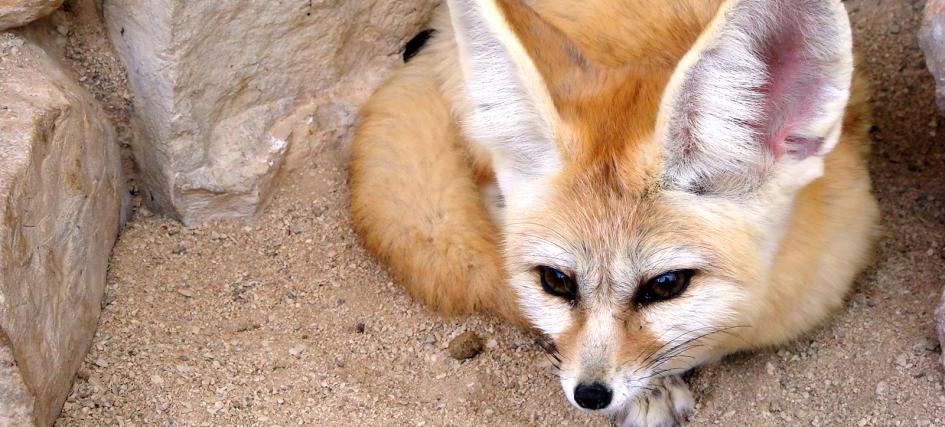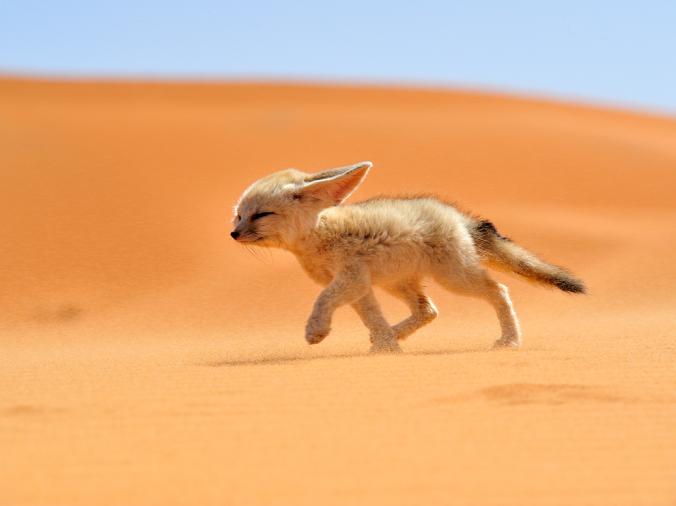1 / 3

Fennic Fox

Males are territorial and mark their boundaries with urine.Males also become aggressive with each other when mating season approaches. Fennec Foxes are sociable animals that mate for life and each pair or family has its own territory. The breeding season of the Fennec Fox occurs January through to March and births occur only once a year. After a gestation period of 52 days, a litter of 2 – 5 young are born. Fennecs foxes aggressively protect their young, and this added protection for the pups may be a reason to maintain community structure.
They forage for plants but also eat rodents, eggs, reptiles, and insects. Like most desert dwellers, the fennec fox has developed the ability to go for long periods without water.Fennec foxes are opportunistic eaters. They forage for plants but also eat rodents, eggs, reptiles, and insects. Like most desert dwellers, the fennec fox has developed the ability to go for long periods without water.
Currently the fennec fox has long thick hair, large ears, is nocturnal, can go long periods of time without water, and has hairy feet. Millions of years from now the Fennec Fox might have larger ears, a stronger body, and stronger legs. These (possible) adaptations are due to the change in the environment and global warming.
Sandy Sahara and elsewhere in North Africa. The Fennec Fox is nocturnal which helps them to deal with the heat of the desert. Fennec foxes dwell in the sandy Sahara and elsewhere in North Africa. Their nocturnal habits help them deal with the searing heat of the desert environment, and some physical adaptations help as well. Their distinctive, batlike ears radiate body heat and help keep the foxes cool. They also have long, thick hair that insulates them during cold nights and protects them from hot sun during the day. Even the fox's feet are hairy, which helps them perform like snowshoes and protects them from extremely hot sand. The fox's feet are also effective shovels for frequent digging—fennec foxes live in underground dens.
Fennec foxes perceive their environment primarily through highly developed senses of hearing and smell. Their enormous ears are able to filter sound through many centimeters of sand, and can detect subtle differences between whines and whimpers in the calls of other Fennec Foxes. Fennec foxes perceive their environment primarily through highly developed senses of hearing and smell. Their enormous ears are able to filter sound through many centimeters of sand, and can detect subtle differences between whines and whimpers in the calls of other fennecs. A reflective retina called a tapetum enhances night vision. This adaptation creates the illusion of glowing eyes and is characteristic of nocturnal animals. Social rank among fennec foxes is communicated mainly through play. As social animals, they use visual and tactile communication.
Officially, fennec foxes are currently listed as “least concern,” but this is greatly due to a data deficiency. There is a lot that is unknown about this fox due to the harsh environment, their elusive nature, and their nocturnal behavior. They do have protected status in some areas, but there are still numerous threats to their livelihood. These threats include human encroachment, climate change, disease, fur trade, and lastly, pet trade. Because of their size and appearance, there is a large market for fennec fox pets. However, it is important to keep in mind that no matter how cute they are, fennec foxes are ultimately still a wild animal.
